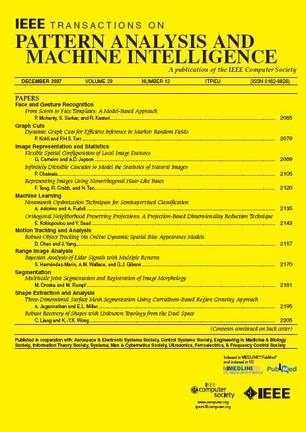Left Barrier Loss for Unbiased Survival Analysis Prediction.
IF 18.6
1区 计算机科学
Q1 COMPUTER SCIENCE, ARTIFICIAL INTELLIGENCE
IEEE Transactions on Pattern Analysis and Machine Intelligence
Pub Date : 2025-08-07
DOI:10.1109/tpami.2025.3597163
引用次数: 0
Abstract
Survival analysis (SA) prediction involves the prediction of the time until an event of interest occurs (TTE), based on input attributes. The main challenge of SA is instances where the event is not observed (censored), typically through an alternative (censoring) event. Most SA prediction methods suffer from drawbacks limiting the usage of advanced machine learning methods: Ignoring the input of the censored samples, no separation between model and loss, and typical small datasets and high input dimensions. We propose a loss function, denoted suRvival Analysis lefT barrIer lOss (RATIO), that explicitly incorporates the censored samples input in the prediction. RATIO accounts for the difference between censored and uncensored samples, by only considering censoring events occurring after the predicted, and through a linear term on the uncensored data event time. RATIO can be used with any prediction model. We further propose FIESTA a data augmentation method, combining the TTE of uncensored samples with the input of censored samples. We show that RATIO drastically improves the precision and reduces the bias of SA prediction in both models and real-life SA problems, and FIESTA allows for the inclusion of high-dimension data in SA methods even with a small number of uncensored samples.无偏生存分析预测的左屏障损失。
生存分析(SA)预测涉及基于输入属性预测感兴趣事件(TTE)发生的时间。SA的主要挑战是事件没有被观察(审查)的情况,通常是通过替代(审查)事件。大多数SA预测方法都存在限制先进机器学习方法使用的缺点:忽略截尾样本的输入,模型和损失之间没有分离,典型的小数据集和高输入维数。我们提出了一个损失函数,表示为生存分析左屏障损失(RATIO),它明确地在预测中包含了删减的样本输入。RATIO通过只考虑在预测之后发生的审查事件,并通过对未审查数据事件时间的线性项来解释审查和未审查样本之间的差异。RATIO可用于任何预测模型。我们进一步提出FIESTA一种数据增强方法,将未删减样本的TTE与删减样本的输入相结合。我们表明,在模型和现实生活中的SA问题中,RATIO显著提高了SA预测的精度,减少了SA预测的偏差,FIESTA允许在SA方法中包含高维数据,即使只有少量未审查的样本。
本文章由计算机程序翻译,如有差异,请以英文原文为准。
求助全文
约1分钟内获得全文
求助全文
来源期刊
CiteScore
28.40
自引率
3.00%
发文量
885
审稿时长
8.5 months
期刊介绍:
The IEEE Transactions on Pattern Analysis and Machine Intelligence publishes articles on all traditional areas of computer vision and image understanding, all traditional areas of pattern analysis and recognition, and selected areas of machine intelligence, with a particular emphasis on machine learning for pattern analysis. Areas such as techniques for visual search, document and handwriting analysis, medical image analysis, video and image sequence analysis, content-based retrieval of image and video, face and gesture recognition and relevant specialized hardware and/or software architectures are also covered.

 求助内容:
求助内容: 应助结果提醒方式:
应助结果提醒方式:


